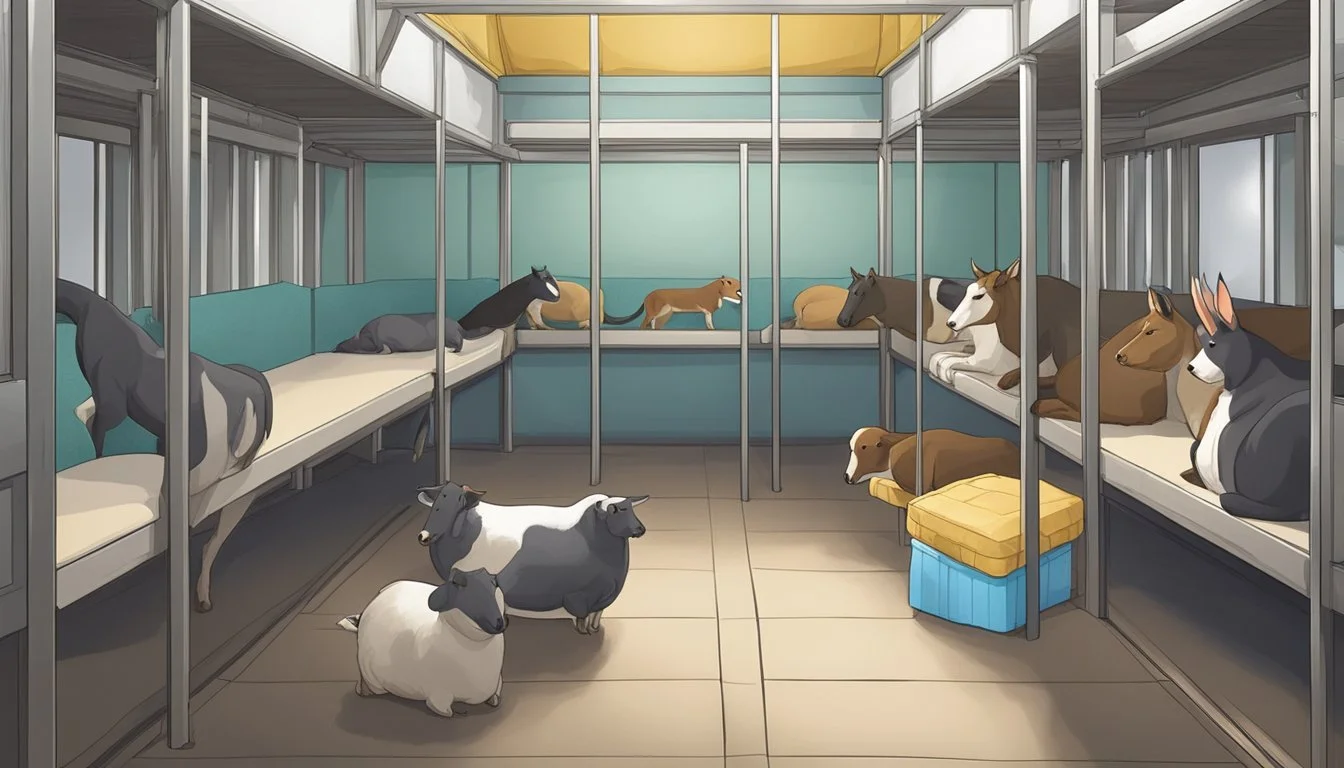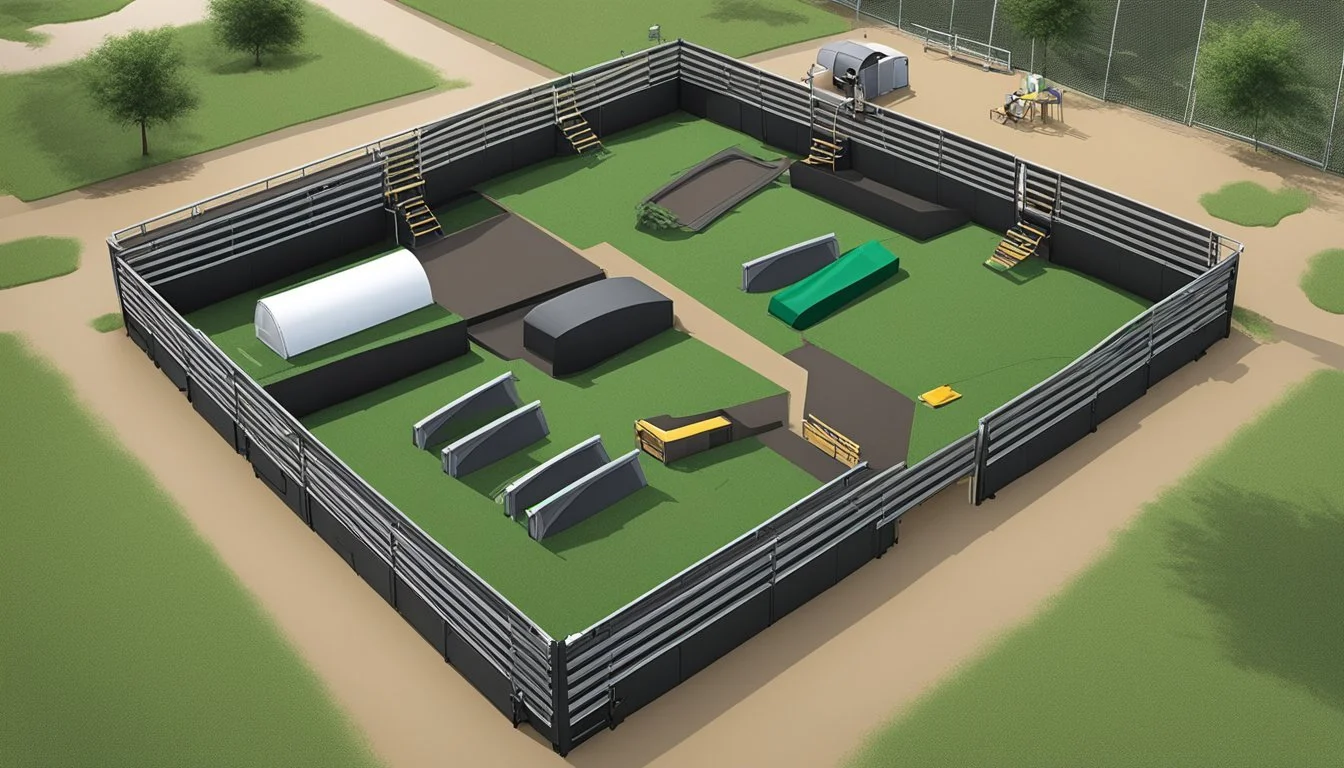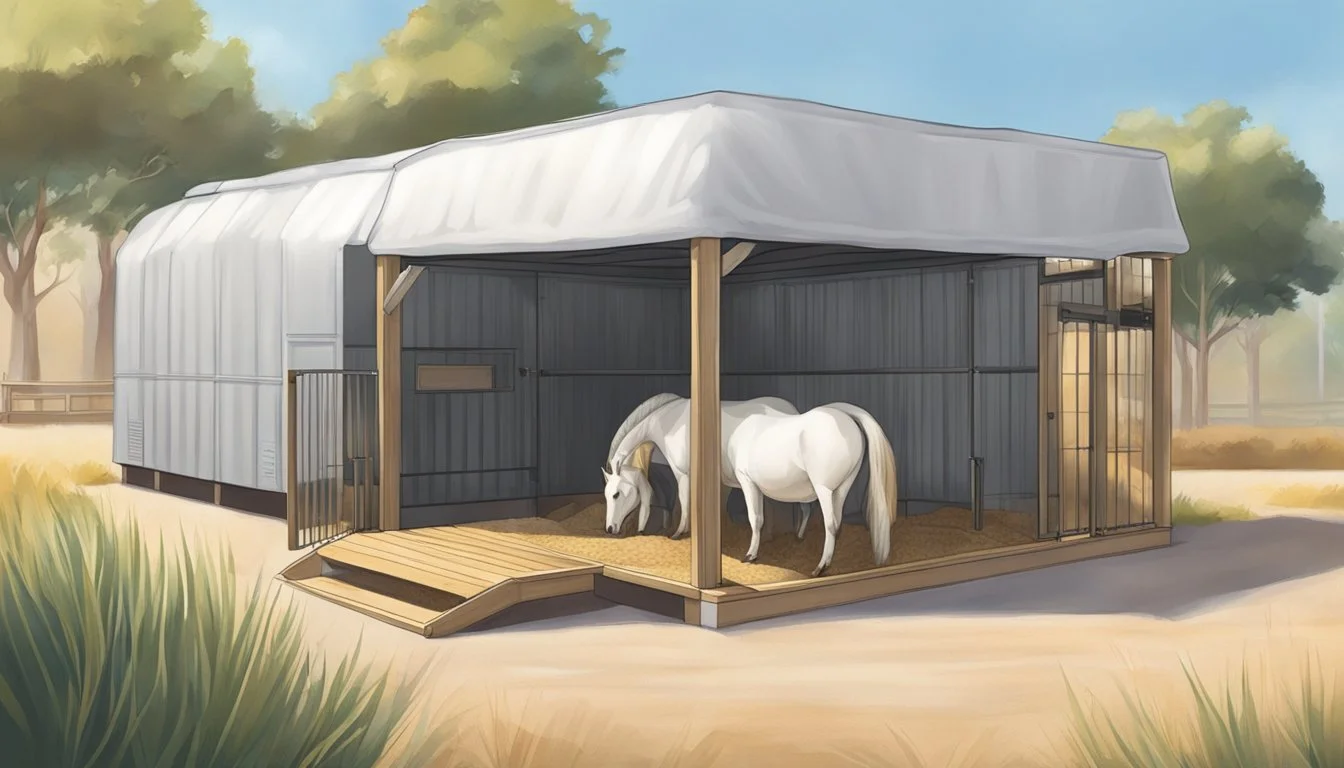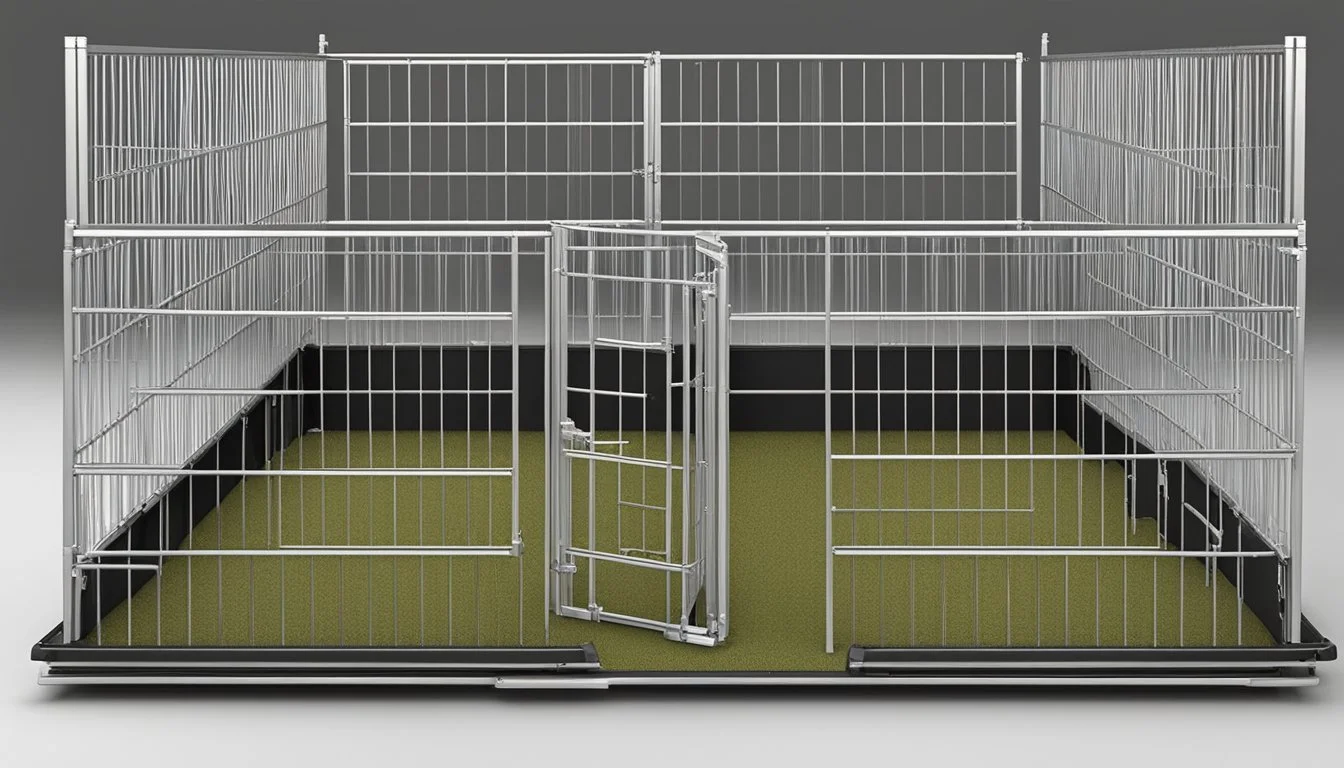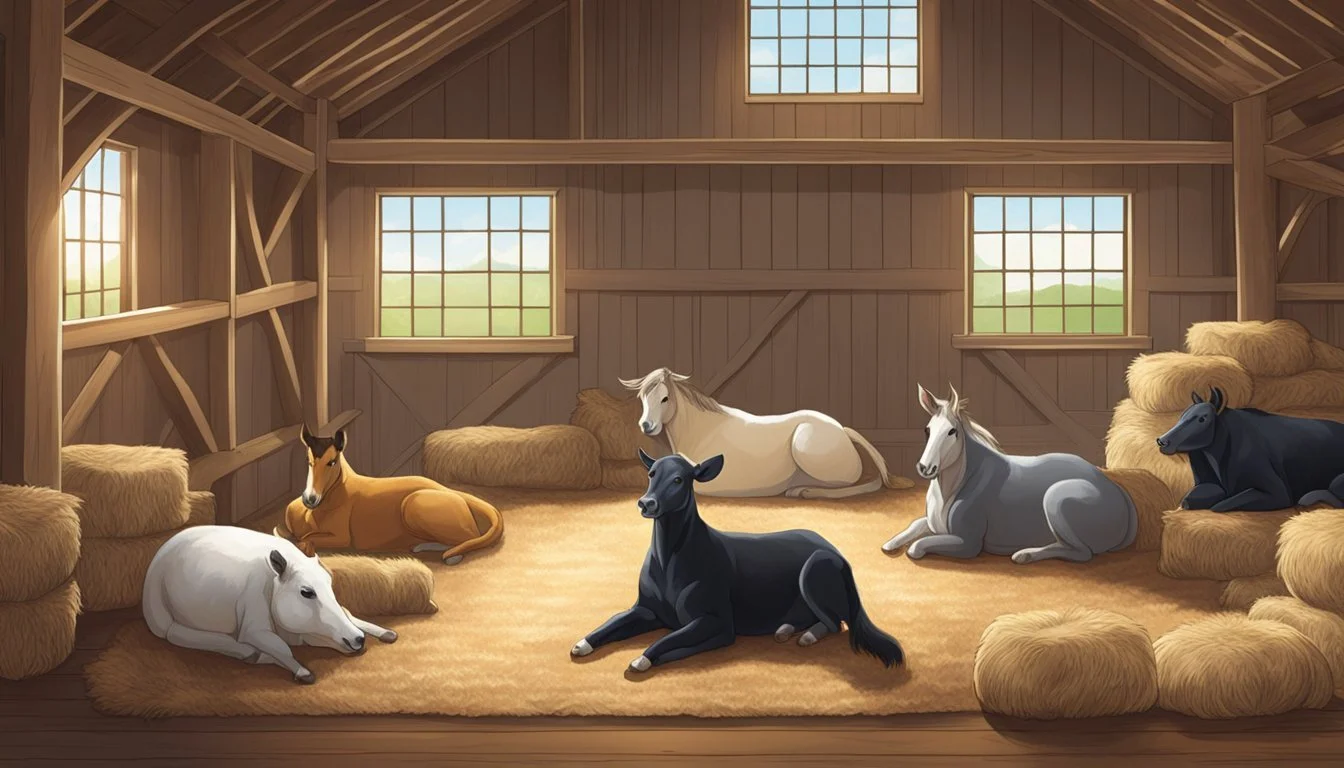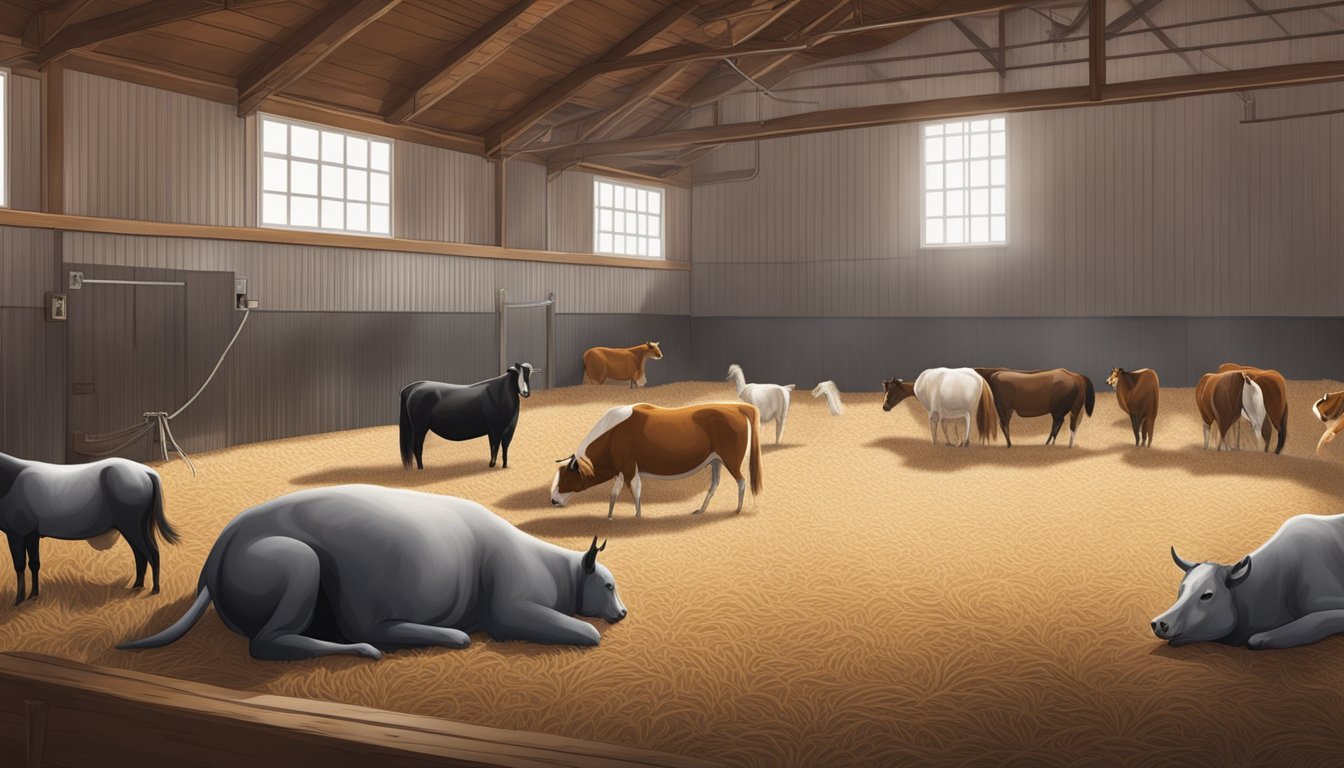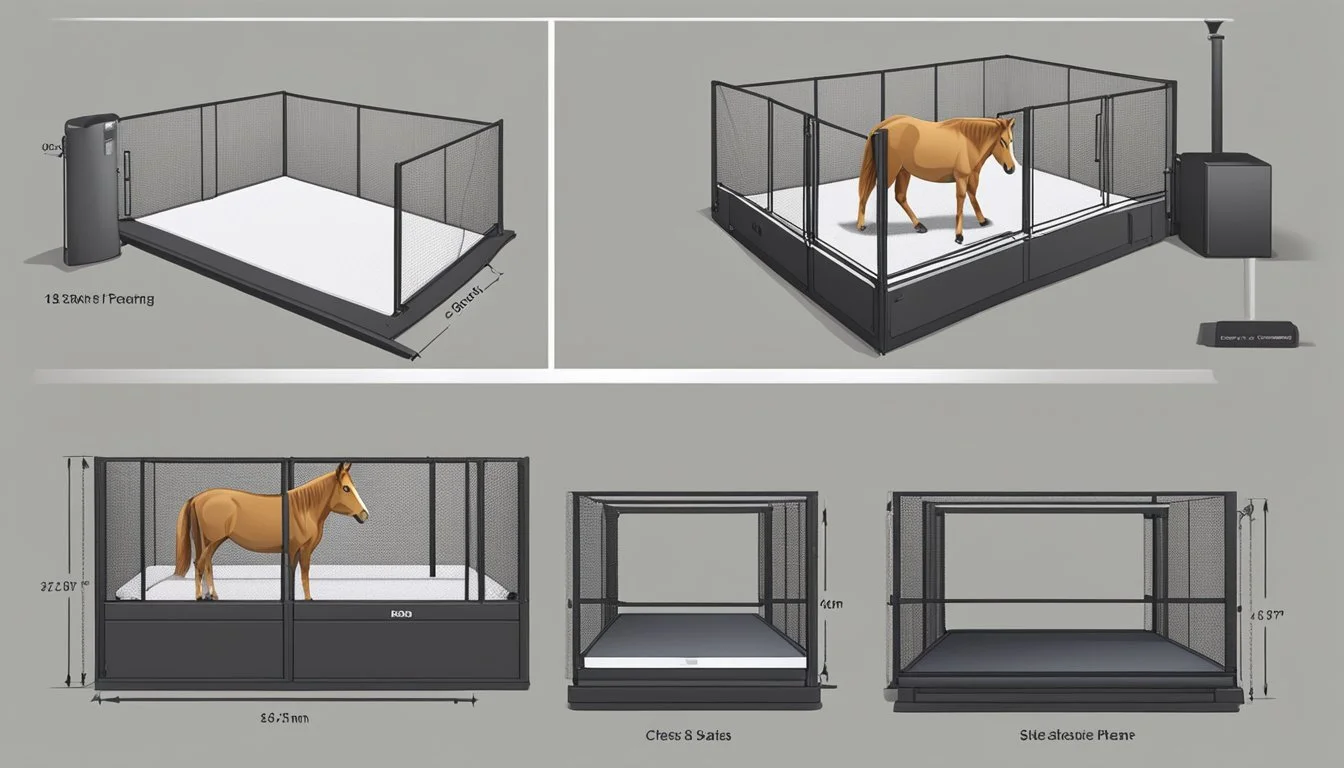Upgrade Your Animal Housing
Enhance Comfort and Cleanliness with Stall Mats
Proper animal housing is a fundamental aspect of ensuring the ultimate comfort and cleanliness for housed animals such as horses. Modern advancements in stall flooring, such as stall mats, have transformed the way animals live indoors, bringing a host of benefits to both animals and their caretakers. Stall mats have become a sought-after solution for those aiming to improve the living conditions within barns and stables.
Specifically designed for equine use, high-quality stall mat systems deliver a level of comfort that greatly surpasses traditional bedding materials. These mats are crafted to mimic natural turf, promoting rest and reducing stress on the animals’ joints. Not only do these mats provide ergonomic benefits for horses, but they also facilitate cleanliness within the stall. A properly installed stall mat system is waterproof and ensures that waste and bedding remain on the surface for easy removal, thus enhancing the overall hygiene of the space.
The efficiency of stall mats extends to their economic and environmental impact. Equine caretakers find that using stall mats significantly reduces the amount of bedding needed, cutting down on both costs and labor. The decrease in bedding means less waste production and, consequently, a more sustainable approach to animal housing. Incorporating stall mats into animal housing ultimately elevates the level of animal welfare while streamlining maintenance routines.
The Importance of Stall Mats for Equine Comfort
Equine experts agree that the incorporation of high-quality stall mats is crucial for optimizing horse well-being and maintaining ultimate comfort in their living spaces. Stall mats provide a protective layer that can greatly enhance the day-to-day experience of these animals.
Understanding Stall Comfort and Horse Well-being
A horse's stall is more than just a place for confinement; it becomes their sanctuary for rest, recovery, and safety. Stall comfort is essential for a horse's overall well-being. Horses spend significant amounts of time in their stalls, necessitating an environment that supports their health. An uncomfortable stall surface can lead to stress, restlessness, and a host of physical ailments, such as joint pain or hoof issues. A stall mat system provides soft cushioning which mimics the natural giving surface horses are accustomed to in the wild.
Benefits of a Resilient Stall Surface
Stall mats can have a profound impact on equine comfort:
Soft Cushioning: These mats offer a padded surface, reducing the stress on a horse's joints and muscles, and can help prevent injuries.
Environmental Control: A controlled stall environment, facilitated by matting, can assist in temperature regulation and moisture control, contributing to overall healthier living conditions.
Traction and Stability: Horses benefit from the non-slip surfaces of stall mats, lowering the risk of falls when standing or lying down.
Ease of Maintenance: Resilient stall mat surfaces are easier to clean, which helps maintain a sanitary environment, ultimately benefiting the horse's health.
Eco-Friendly Options: Many stall mats now come in environmentally-friendly materials, reducing the ecological footprint of equine facilities.
Through these enhancements to a stall environment, the latest stall mats can provide ultimate comfort for horses while supporting sustainable animal housing practices.
Types of Stall Mats and Their Features
When considering stall mats for animal housing, it's important to evaluate the variety of types available and their distinct features. These innovations not only enhance comfort and cleanliness for the animals but also provide ease of maintenance for the handlers.
Exploring Multi-Celled Mattress Options
Multi-celled mattress systems offer a unique approach to equine comfort. These systems typically use rubber crumbs in each cell, delivering a soft yet resilient surface that mimics natural bedding. The construction is designed to distribute weight uniformly, reducing pressure points and providing stable support. Many of these mattresses feature a patented design that ensures durability and longevity.
The Advantages of Rubber-Coated Waterproof Top Covers
Rubber-coated waterproof top covers are crucial for maintaining hygiene and dryness in stalls. The waterproof feature prevents liquids from seeping through, protecting the mattress underneath. These covers are especially beneficial in that they facilitate easy cleaning—spills can be quickly mopped up without damaging the mat. Additionally, the non-slip surface enhances safety for the animals, minimizing the risk of slips and falls.
Innovations in Interlocking Stall Mats
Interlocking stall mats are a technologically advanced option that ensure a secure fit and comprehensive coverage of the stall floor. The interlocking edges create a cohesive barrier against moisture and debris, and they are straightforward to install. The seamless fit helps prevent the mats from shifting, which could otherwise pose a risk for injury. Moreover, these rubber mats come in various thicknesses, often ranging from 1/2 inch to 1 inch, to cater to different needs and preferences.
Installation and Maintenance of Stall Mats
Installing stall mats not only enhances the comfort of animals but also contributes to an economical and more manageable cleaning process. Durability is assured with proper installation and maintenance, leading to long-term savings and ease of stall cleaning.
Step-by-Step Installation Instructions
Prepare the Base: A well-prepared base is crucial. Start by laying about 4 inches of compactable crushed stone, ensuring it is level, then compact this layer firmly.
Stone Dust Layer: Next, add 1 inch of stone dust over the compacted stone base without compacting this top layer.
Positioning the Mats: Center the stall mat in the stall, shiny side up. Let excess material run up the sides if applicable.
Securing the Mats: With screws provided, secure molding over the liner at the desired height on the walls, then trim the excess with a utility knife.
Edge Adjustments: Lay mats starting from the middle of the stall, moving outwards. Keep factory sheared edges together for the best fit and cut to size as needed on the outer edges.
Maintaining Cleanliness and Durability
Regular Cleaning: Promote mat longevity by removing debris daily and hosing down as needed.
Inspections: Regularly inspect for any tears or lifting which can be trip hazards or areas for bacteria to grow. Address these issues promptly to maintain the integrity of the mat.
Dealing with Bedding and Manure Management
Bedding Usage: Stall mats often enable reduced bedding use. Concentrate bedding in specific areas where the animals usually relieve themselves.
Manure Pile Management: Regularly removing manure and wet bedding helps minimize odors and maintain a clean environment. Establish a routine for moving manure to a designated manure pile.
By following precise installation instructions and maintaining a regular cleaning schedule, one can ensure their animal housing is both comfortable for their animals and easy to maintain.
Health Benefits and Injury Rehabilitation
In the realm of equine care, stall mats are not merely a luxury; they play a critical role in ensuring the well-being and recovery of horses. When integrated into animal housing, these mats offer significant ergonomic support and aid in injury rehabilitation, while also preventing joint-related ailments such as hock sores.
Ergonomic Support for Horses
When it comes to horse housing, the choice of flooring is crucial for providing ergonomic support. StableComfort systems are engineered to replicate the natural feel of turf, therefore encouraging horses to rest and lie down more frequently. The design of these mats distributes weight evenly, significantly reducing the stress on horses' legs and joints.
Even Surface: A leveled surface helps maintain balance and reduces physical strain.
Non-Slip Texture: Assists in safe movements, minimizing the risk of slips and falls.
Rehabilitative Aspects of Stablecomfort Systems
StableComfort stall mats facilitate the convalescence phase post-injury. They are tailored to cater to horses in recovery, providing a padded surface that can hasten the healing process.
Accelerated Healing: The cushioned support can shorten the timeline of injury rehabilitation.
Horse Comfort: With a gentler base, horses may exhibit enhanced comfort levels, which is integral to recovery.
Prevention of Hock Sores and Stiff Joints
Hock sores and stiff joints in horses are often a product of hard or uneven floors in stables. Incorporating StableComfort systems mitigates these risks by offering a soft yet supportive environment.
Hock Sore Reduction: The protective cushioning helps prevent scrapes and sores from lying down.
Joint Relief: The mats’ elasticity assists in loosening and keeping joints more flexible, thereby preventing stiffness.
Horse owners and caretakers who invest in ergonomic stall mats like StableComfort can expect a noticeable improvement in their animal’s comfort and a marked reduction in joint-related issues. These systems are not just a basis for stable flooring but a proactive investment in the health and longevity of horses.
Features and Specifications of Top Stall Mat Products
Selecting the right stall mat product is vital for the comfort and cleanliness of animal housing. This section spotlights specific features and specifications consumers should consider, including material quality and warranties that assure durability and longevity.
Assessing Stall Mat Material Quality
The quality of a stall mat's material heavily influences its durability and effectiveness. High-quality mats are often made from virgin rubber, noted for its high tensile strength and resistance to abrasion. These mats provide superior shock absorbency, essential for protecting joints and muscles of animals during movement and rest. Systems such as the StableComfort and Equimats use materials that not only offer cushioning but also replicate the feel of natural turf.
Material Composition: Virgin rubber, often paired with proprietary composites.
Key Qualities:
Durability: Resists wear from heavy use.
Comfort: Cushioned surface aids in injury prevention and comfort.
Safety: High traction for animal stability.
Warranty and Lifespan Considerations
A reliable indicator of a stall mat's quality is its warranty period. Products often come with varying warranties that can provide insight into their expected lifespan. A robust stall mat system should be designed not just to withstand daily use but also special situations such as foaling, where additional comfort and sanitize conditions are crucial.
Warranty Terms: Range from a few years to potential lifetime coverage.
Factors Affecting Lifespan:
Usage Intensity: More frequent use may reduce lifespan.
Material: Virgin rubber typically lasts longer.
Maintenance: Proper care can extend the life of stall mats.
When evaluating options, consider mats like StableComfort which offer a wall-to-wall waterproof stall mat system, reducing maintenance and improving hygiene. The integration of such systems can drastically reduce the time and resources needed for stall upkeep.
Optimizing Stable Environment for Various Animals
Upgrading animal housing with stall mats enhances comfort for the animals and simplifies maintenance for the owner. These improvements are pivotal for an optimized stable environment.
Adaptability to Different Animal Housing Needs
Stall mats, such as those provided by StableComfort, are versatile and can be tailored to various animal housing needs. They can simulate natural turf, providing support and comfort that is critical for animals' health and well-being.
Horses: A StableComfort mat can reduce bedding use and still maintain the equivalent comfort of 6 inches of traditional bedding.
Cattle: For larger livestock, durability and ease of cleaning are essential, which these mats provide.
Poultry: Properly cushioned and hygienic surfaces are vital for poultry; mats must be suitable for nesting and easy to sanitize.
The adaptability ensures that owners can cater to the specific needs of different animals, ranging from horses to smaller farm animals, improving their living conditions substantially.
Creating a Safe and Hygienic Environment
Investing in quality stable mats greatly contributes to a safe and hygienic environment for animals.
Ventilation: Good air circulation is paramount to prevent the build-up of ammonia and moisture; mats help keep the surface dry and clean.
Construction: High-quality stall mats have a non-slip surface and interlocking edges, ensuring a flat and stable surface that promotes animal safety.
Maintenance: Stable mats are designed for easy cleaning, decreasing time spent on stall maintenance by at least 50%.
By fostering a cleaner and safer space, animals are less prone to injuries and diseases, which directly benefits their health and the owner's operational efficiency.
Comparing Stall Mats to Traditional Bedding Materials
Stall mats offer a modern approach to equine comfort and cleanliness, presenting an alternative to traditional bedding materials like wood shavings. This section explores the benefits and considerations of using stall mats compared to conventional options.
The Shift from Wood Shavings to Modern Solutions
Traditionally, horse stalls have been bedded with materials like wood shavings or straw, prized for their availability and initial comfort level. However, the equine industry has seen a shift towards more innovative solutions, such as stall mats. These mats are designed for optimal comfort, with a cushioning effect that traditional wood shavings struggle to maintain over time as they break down.
Evaluating Cost-Effectiveness and Environmental Impact
When weighing the value of stall mats against wood shavings, the economic and environmental implications are significant. Mats often require a higher upfront investment, but their durability means fewer replacements over time.
Wood Shavings:
Pros: Lower initial cost, biodegradable
Cons: Frequent replenishment, higher long-term cost
Stall Mats:
Pros: Less frequent replacement, reduced bedding usage
Cons: Higher initial cost, but more cost-effective over the long-term
From an environmental standpoint, mats can be seen as more sustainable due to the reduction in waste and bedding material usage.
How Stall Mats Improve Bedding Efficiency
Stall mats are not only comfortable for the animal but also improve efficiency in bedding management. They provide a stable platform that minimizes the amount of bedding needed, thus reducing the routine costs associated with bedding usage. Additionally, cleaning is often easier with stall mats, as they allow for quick removal of waste without taking large amounts of bedding with it. This increases the cleanliness of the stall and provides a more hygienic environment for the horse.
Advancements and Future of Stall Mat Technology
Developing technology in stall mats aims to enhance comfort for animals, ensure sustainability, and maintain facility integrity.
The Evolution of Stall Mat Systems
Stall mat systems have undergone significant transformation since their inception, integrating both comfort and durability as primary features. Initially, basic rubber mats provided a simple barrier between animals and hard floors. Today, they have evolved into complex systems. One example is the Advanced Comfort Technology, which took the concept of waterbeds and adapted it for bovine use, improving joint health and rest quality for cows.
The technology within these systems has often been patented, highlighting their unique contributions to animal housing. For instance, the SoftBed Comfort stall mattress is specifically designed to maintain a level surface that prevents injuries and incorporates a slightly-textured exterior for enhanced traction. With these advancements, stalls are no longer just about providing a barrier but have transformed into systems that actively contribute to animal wellness.
Looking towards Sustainable and Innovative Solutions
Sustainability has become a key driver in the future of stall mat technology, with innovation focused on reducing waste and the carbon footprint of farms. Innovative solutions include the use of recycled materials in mat construction, ensuring that products are not only durable but also environmentally responsible.
Facilities are increasingly requiring systems that align with these values and maintain operational integrity. The Freestall Reimagined project highlights the potential for mat systems to improve stall hygiene and space usage, which can decrease the environmental impact and enhance the well-being of animals. Looking forward, one can expect stall mat systems to continue evolving, with a strong emphasis on environmental sustainability and technological innovation.
Case Studies and User Testimonials
In a selection of case studies, stable owners have reported significant benefits after installing various types of stall mats. One particular study highlighted that with the addition of a SoftBed Comfort Stall Mattress, owners noted a marked improvement in their horses' comfort. The stall floor remained level, which is crucial in preventing injuries. Owners also praised the enhanced traction provided, reducing the risk of slips on concrete and wooden floors.
Another real-world example involving rubber stall mats showed positive outcomes for both animal comfort and stable maintenance. The owner documented the process, starting with a base of 5/8" minus gravel and ending with a compacted and leveled surface ideal for the placement of rubber mats. This installation method resulted in a stall floor that saved time and reduced bedding usage.
Customer satisfaction has been overwhelming for the StableComfort stall mat system, with testimonials emphasizing the reduction in labor and bedding costs due to the mat's design. Users appreciate how the wall-to-wall installation allows for quicker cleaning as the dirty bedding stays on the top layer for easy removal.
Feature: Comfort
Owner Feedback: "Horses rest more often and seem more content."
Feature: Bedding Usage
Owner Feedback: "Notably reduced, saving us money."
Feature: Installation
Owner Feedback: "Straightforward, with a noticeable difference."
Feature: Traction
Owner Feedback: "Improved safety for our horses and staff."
Feature: Maintenance
Owner Feedback: "Cleaning time is halved, which is fantastic."
These instances convey a consistent trend of high satisfaction rates among stable owners who have upgraded to specialized stall mats.

